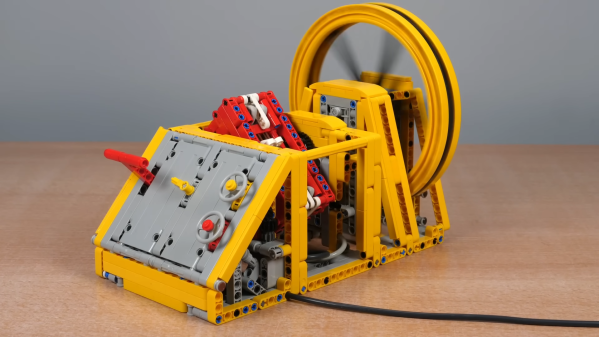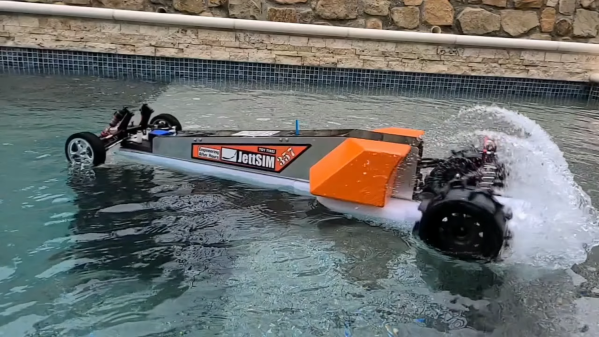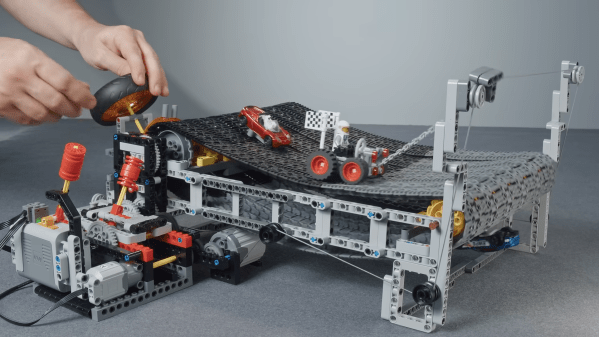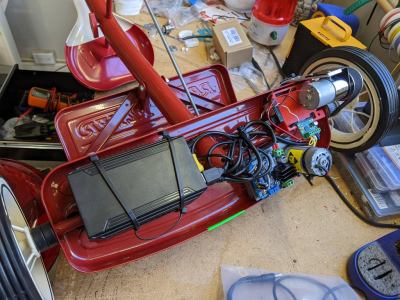Pneumatic engines aren’t something we use every day, but they’re compelling things to see working in practice. [Nico71] built an eye-catching example out of LEGO Technic, and it’s remarkably fully-featured.
The build relies on a single pneumatic cylinder driving a flywheel. Flow to the cylinder is determined by camshaft-controlled valves. The valves themselves are custom-built, composed of hose loops that are kinked to shut off flow. In addition to the basic operating components, the engine also features a throttle valve which uses the same kinked-hose principle. The main control valves are installed in a housing that can be rotated relative to the engine’s frame to vary the timing of the valves relative to the flywheel’s rotation. A gear system allows fine adjustment of the timing. The throttle and timing controls are accessible on a tidy control panel complete with a idle-adjust mechanism.
Those wishing to build one themselves can rejoice, for [Nico71] provides instructions for a small fee. We’ve seen other air engines before, too, often of the 3D-printed variety.



















